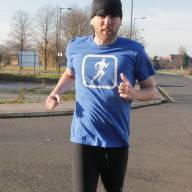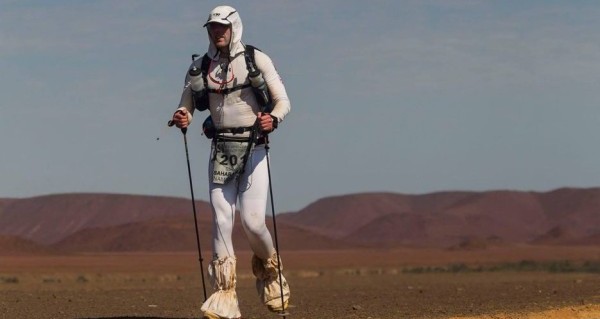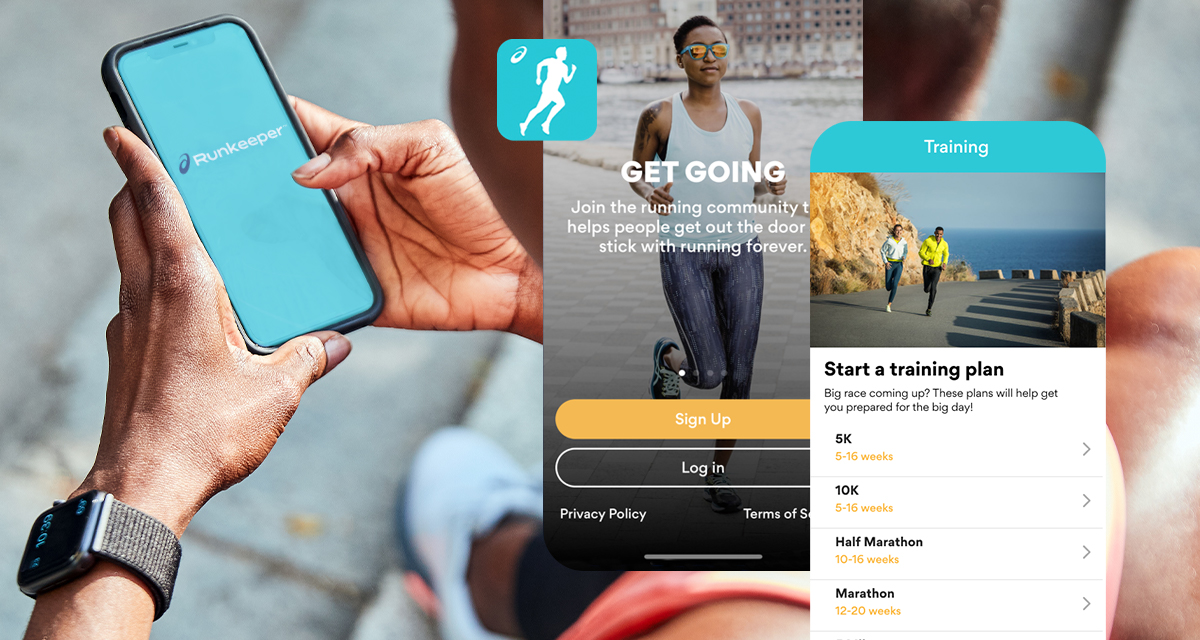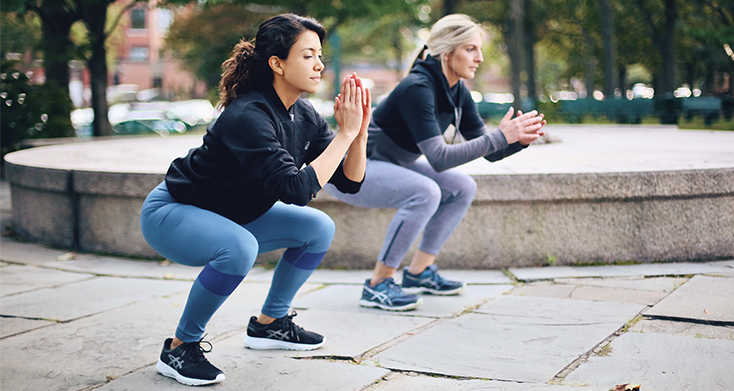Many of you have heard my story: I’m blind and I’ve been using Runkeeper for some time to run on the open road. I’ve been training solo but have run many races with guides, from marathons to ultras to multi-day adventures from Boston to New York. I’ve always had a question in the back of my mind, though: if I can train solo, could I compete solo?
I had been training solo by pairing what it felt like underfoot, which predominantly meant running various different lines, with distance markers on Runkeeper, to memorize the route. So I thought, perhaps if we created a virtual line, I could also compete solo.
This virtual line would exist in a desert race, the 4 Deserts Namibia race to be exact. If I was to deviate from this line, a system would bring me back into place. It seemed so simple. So, I approached IBM, and together we developed an app that did exactly this. We hardcoded the 4 Deserts Namibia course into the app, and if I deviated, a series of beeps would bring me back into line. Much like a parking sensor, the frequency would increase. If all I heard was pure silence, I knew was heading in the right direction.
There were a few assumptions made: The course wouldn’t change, the obstacles wouldn’t be too difficult. After all, the app we had created was unable to notify me of any impending rocks.
They seemed like relatively safe assumptions—I mean, why would the course change? And it’s a desert, just lots of sand right?
The race was a seven-day event at the beginning of May, where you would cover four marathons the first four days, around fifty miles on the fifth, with a little rest on the sixth before a leisurely 10k on the final day. Oh, and you had to carry everything you needed to survive in the desert, from food to sleeping kit and in my case a fair amount of technology!
And we’re off
Cue race day and the impending countdown, 10, 9,. 8. 7, 6—” Simon, we had to change the route slightly,” I was told.
Wait, what!?
But the race had begun so it was time to get moving.
The initial course change didn’t cause too many problems, as the course was so tight that there was a lot of foliage on either side. So if I drifted, I would touch a bush and could easily navigate back.
Once we hit the open plains, the app came into its own. I was able to navigate by the silence—after all, it would only beep if I strayed from the course.
During this period of the race, I had an incredible sense of independence. I was doing it, I was competing solo. My dream! As tears appeared in my eyes, I arrived at an aid station to the applause of the volunteers.
It was a life-changing feeling, as for the first time I had done this alone, thanks to smart technology.
The pain in my feet quickly brought me back down to Earth, though. With a few blisters taken care of, I left the aid station and continued the days’ distance. It wasn’t too long until I nearing the end of the day and then my app triggered to notify me of just that. I had arrived at the finish. Except there didn’t seem to be much noise from the volunteers. That’s because they had moved the finish line!
Thankfully, I shouted out to my ghost runner, who had been following me just in case I got into difficulty (like this) and we managed to find the finish line together.
Day 2: The flag pole
Arriving at the start line a little late, we headed onto a climb. We peaked over a sand dune and then headed down to the beach. The beach lasted forever, it was only broken up by me taking a massive blow to the face and hitting the deck. What had happened? My ghost runner and friend, Neil, came running over and said “Simon, you ran into a flag pole!” How the hell did I manage to find a flagpole in the middle of a desert?!?!
Rising to my feet a little shaken, I just wanted to move on and forget about how embarrassing it is to run into a pole in a desert. So I kept my head down and finished day 2!

Day 3: The rock field
On this day the temperature took a noticeable jump–it was now officially hot. It really did feel like a desert, with some real open plain. The app’s navigation put a smile on my face, as it was working just as expected. It was all going incredibly well as we arrived into aid station three. I sat down ate a little snack and just as we were about to leave I heard someone say, “the first half is a rock field, then it’s all flat.” Um, what?
It didn’t take long for us to arrive at said rock field and I was left with a difficult decision: do I take it on or turn around?
I would take it on.
I pushed forward into a field littered with rocks ranging from the size of your fist up to a loaf of bread. There was no room for feet, just relentless slipping on rocks, twisting of ankles, and stubbing of toes. Oh and the occasional ripping of skin from the bottom of your feet. In short, it was brutal. As a blind runner, I had no way of making any shore fitting. Every step meant I was taking on more damage and with every step, I was deeper into the field with no chance of stopping. I had to keep moving forward.
But it was taking its toll, mentally and physically. I was beginning to fall apart. I began to panic and my blood pressure hit rock bottom, my breathing began to deteriorate and my limbs began to tingle and go numb.
But I wasn’t at the edge of the rock field, so I had no choice, I had to keep going. After what felt like an eternity I reach the end, broken and exhausted. But this wasn’t the finish line, that was still nearly 4 miles away. I had to keep pushing to the end; I did finally get to the finish line but I was destroyed.
I collapsed into the tent and told myself I would eat soon. A couple of hours later I attempted to force down some fish pie, it didn’t work, I just couldn’t stomach it. I gave up and headed to bed.
Day 4: Pushing to my limits
I woke in the morning and headed for breakfast, if I could get something down all would be ok. I managed to eat some porridge, so grabbed my kit and headed to the start line. The temperature had now really jumped up, the rumors were suggesting somewhere in the 40 Celsius area.
I kept it together until the first checkpoint, then I began to fall apart. How far I had pushed the previous day had really taken it out of me mentally and physically. I was unsure of how much more I could push. My blood pressure was dropping again and the tingling and numb limbs were on their way back. Now they were joined with dizzy spells and a total blackout of my vision—while I am blind I do retain light detection, or at least I did for a brief moment between the blackouts.
I had pushed it to my limit, I just couldn’t go any further. My leg was aching terribly from all the damage in the rock fields, mentally I was broken. I was in a bad way. So I made the very difficult decision to drop from the race.
While I had failed to complete the full distance, I had proven it possible to compete solo as a blind runner. I had gone to one of the harshest environments in the world, had broken myself in that rock field, but I had done it. For the first time ever I had proven a blind runner could compete alone.
But what now? Well, now I go back. I intend to train harder this year than ever before, to get my chance to go back and conquer that rock field.
And reach that finish line.





